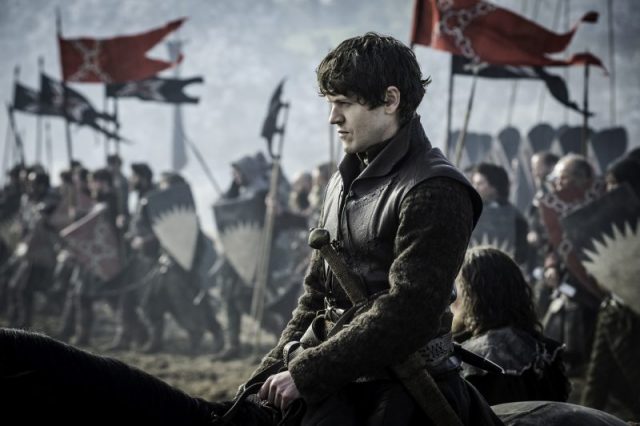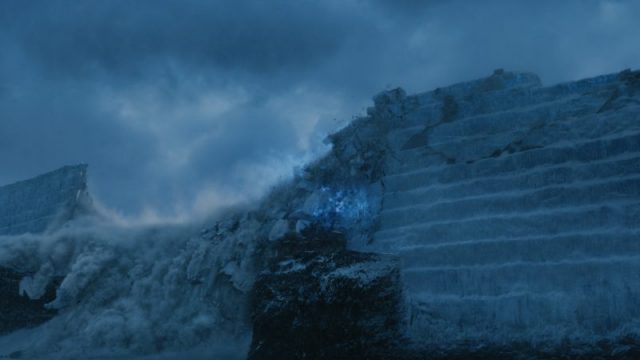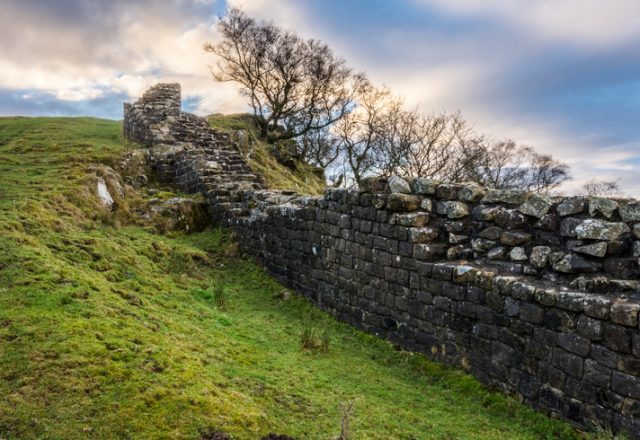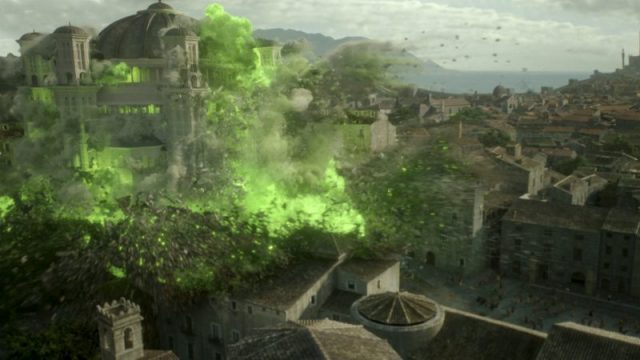The impressive fictional word of Westeros has taken the drama genre by storm. Its popularity is incomparable to any other T.V. show out there today.
One question that’s been brewing from the beginning is just where George R. R. Martin and his screen adaptation writers get their inspiration. Surely they can’t have made all this up?

Kit Harington, Emilia Clarke.
photo: Helen Sloane/HBO
Well, it turns out they didn’t. While some people speculate about storylines borrowed from Shakespeare’s plays, a number of elements in Game of Thrones come directly from real episodes in history.
We’ll start from the beginning and explore, chronologically, some notable parallels between Earth’s real history and the fictional history of Westeros.
Ramsay Bolton’s Torture Tactics are Not News

The creepy obsession with mutilation exhibited by Ramsay Bolton is nothing new to world history. For centuries, humans have resorted to obscene violence for the sake of interrogation or retaliation.
King Ashurbanipal of Assyria (668 – 627 BC) once allegedly threaded a dog chain through an enemy king’s jaw and forced him to live in a dog kennel. Even closer to Bolton’s sick expertise is the act of flaying, or skinning.

In the second century, the Romans flayed Rabbi Akiva for teaching the Torah and in 1199, Pierre Basile was flayed by the English for assassinating King Richard I. We can only hope they didn’t enjoy it as much as Bolton.
The Wall Exists in Real Life – in Scotland!

In 122 AD, Hadrian’s Wall was built at the extreme northern limit of the Roman empire over speculation and fear of the “barbarous” settlements on the other side of the wall. The Wall in Game of Thrones is a recreation of the smaller, Roman version.
In an interview with Rolling Stone Magazine, Martin recollects a trip to the real life wall in 1981, saying “It was the sense of this barrier against dark forces — it planted something in me.

But when you write fantasy, everything is bigger and more colorful, so I took the Wall and made it three times as long and 700 feet high, and made it out of ice.” Scotland isn’t nearly as cold Martin’s fictional north, but the resemblance is uncanny.
Wildfire Came From the Greeks

Though Greek fire is a tad less magical than wildfire, its use in the Siege of Constantinople in 717 AD is shockingly similar to the latter’s use in the Battle of the Blackwater.
Stannis Baratheon employed alchemy in an attempt to take King’s Landing in Westeros and the Umayyad navy made use of one of the earliest known versions of a flamethrower in an attempt to take Constantinople in the Byzantine Empire.
https://youtu.be/0FFD5PF8h0E
Both aggressors — fictional and historical — lost their respective sieges, leaving the victimized kingdoms standing strong. It’s hard to decide what’s cooler: magical inextinguishable fire, or the existence of flamethrowers in the 8th century.
Dinner With an Extra Helping of Death

Along with advanced torture tactics and avant-garde weapons, the bloodiness of the Red Wedding is not part of Martin’s obscene imagination — thankfully for his therapist. In an interview with Entertainment Weekly, he admits that he was inspired by another equally deceptive dinner in history.

Though there were only two casualties, the Black Dinner of 1440 was held under the guise of a peace offering and resulted in death. Brothers of the Douglas clan were invited to dine with the King of Scotland, but upon arrival they were served an omen: a black bull’s head.
The two were immediately put on “trial”, and beheaded before dessert. Considerably less messy than the 15,000 casualties in the Riverlands, the Black Dinner was nonetheless shockingly deceptive behavior.
Why Lannister is Easily Mixed Up with Lancaster

In an all-encompassing parallel, Martin doesn’t hesitate to admit that the entire series was based on the War of the Roses. Before Game of Thrones, he had considered writing a novel about the war. “But the problem with straight historical fiction is you know what’s going to happen,” he said in Rolling Stone.
“I wanted to make it more unexpected, bring in some more twists and turns.” In the 1400s, the York and Lancaster families spent over 30 years fighting over the throne of England.

In Westeros, the Stark and the Lannister families (and Baratheon and Targaryen and Tully and Arryn and Tyrell …) do the same. Martin told The Guardian, “My model for this was the four-volume History of the Plantagenets that Thomas B. Costain wrote in the ‘50s.”
From this select time in history alone he garnered enough ideas and inspiration for the love, lust, and lore that exists in Westeros.
Winter Already Came

It’s the infamous Game of Thrones tagline that rounds up these historical inspirations. In history, the Medieval Warm Period had kept the Earth unseasonably warm for almost three centuries.
But in the 13th century, cold weather began to set in. Starting around 1275, plants began to die out because of plummeting temperatures. Glaciers began to spread. Famine struck Europe in the early 14th century, and major rivers and lakes froze over. Sound familiar? Winter, indeed, had come to the world.

It lasted for approximately 500 years, setting a record temperature low in 1650. It doesn’t seem so far fetched now, when considering the fact that winter lasts for generations in Westeros.
Read another story from us: The mythology behind Game of Thrones White Walkers
While his written and televised Game of Thrones may be an imaginative masterpiece, Martin’s creation is not unparalleled. In fact, the series falls in line with many memorable events throughout our own history, supporting the theory that there is no original idea.
